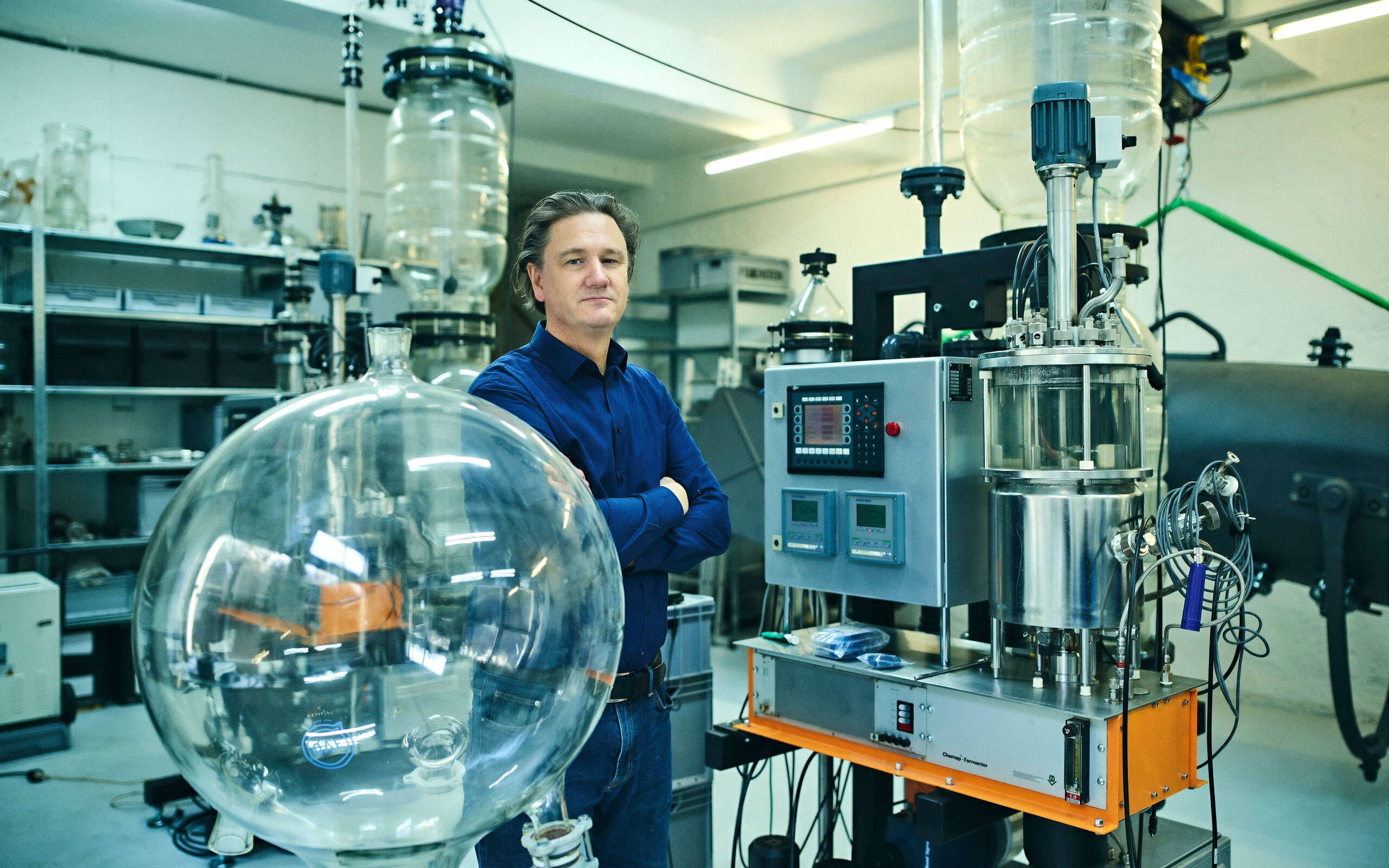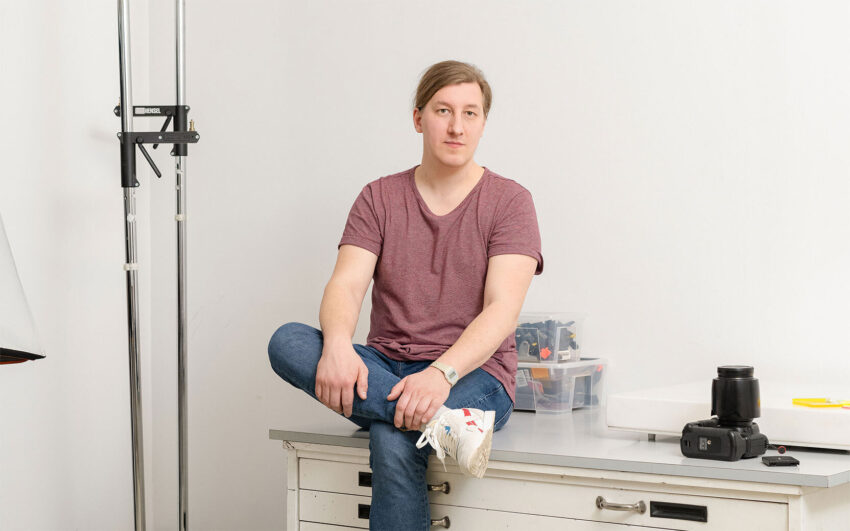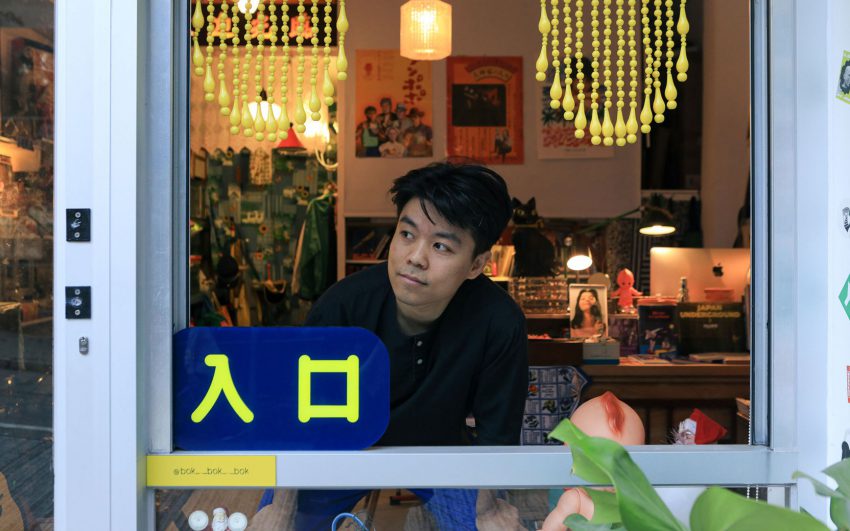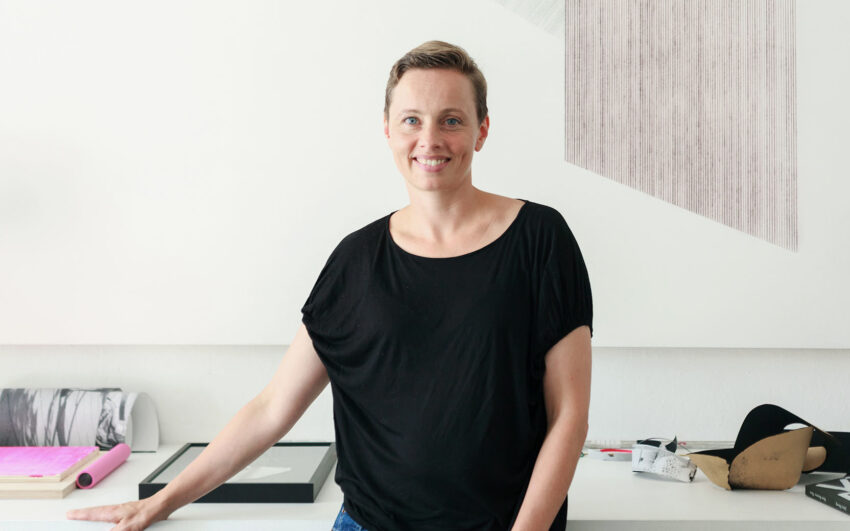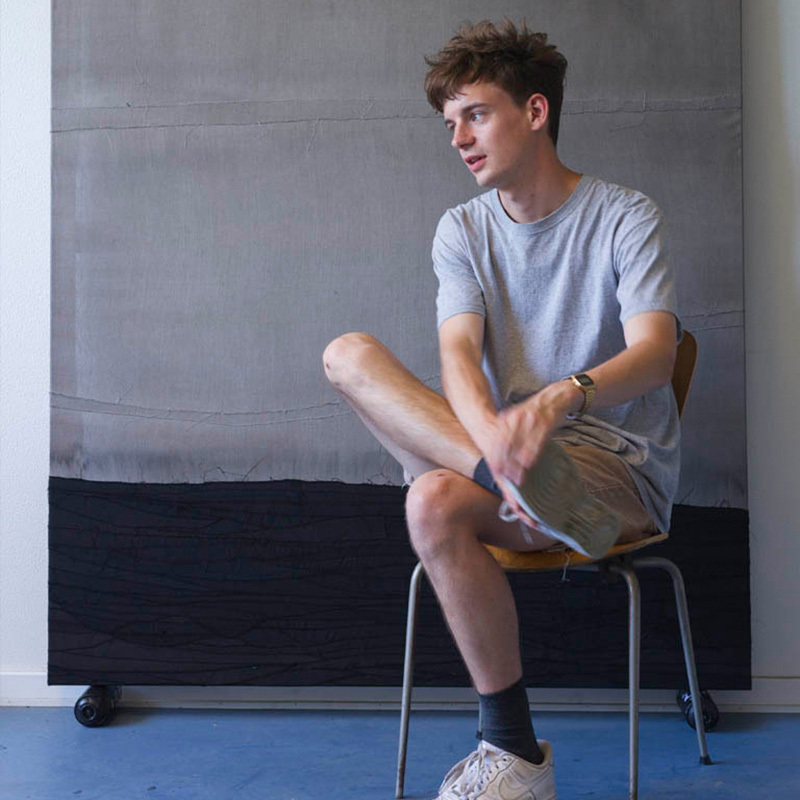As an artist, Thomas Feuerstein is interested in the relationship between art and science. His projects, often developed over a number of years, take very different forms. He creates sculptures and installations with strong performative character, unleashing technology and biological processes.
Thomas, where did your interest in visual arts and the profession of the artist come from?
From my early childhood, I made strange things from clay and sketched manically with ballpoint pen – mostly elephants and peculiar figures. In my school days, my uncle gave me an old Nizo Super 8 camera, which opened a new window onto the world. Together with a friend I shot short feature films and after graduating from high school, I worked as a camera assistant. Studying film or art in Austria was not an option for me at the time. I wanted to go abroad, I worked in various jobs and studied art history and philosophy in my spare time. I was unable to save enough from my earnings to study abroad, but I was able to afford to buy materials, with which I created installations, that was a good option.
What topics were you preoccupied with at the beginning of your artistic career?
They were basically similar questions to those that still concern me today. How are people and society changing through technology, economics, and politics, and what role does art play in this? In particular this focused my attention on digital technology in the 1980s and then biotechnologies in the 1990s. My approach was influenced by post-structuralism which opened up a worldview in which I experienced my everyday life and much that had to do with art as antiquated. I was curious about new connections between art and reality, questioned classical authorship, and became interested in network ideas.
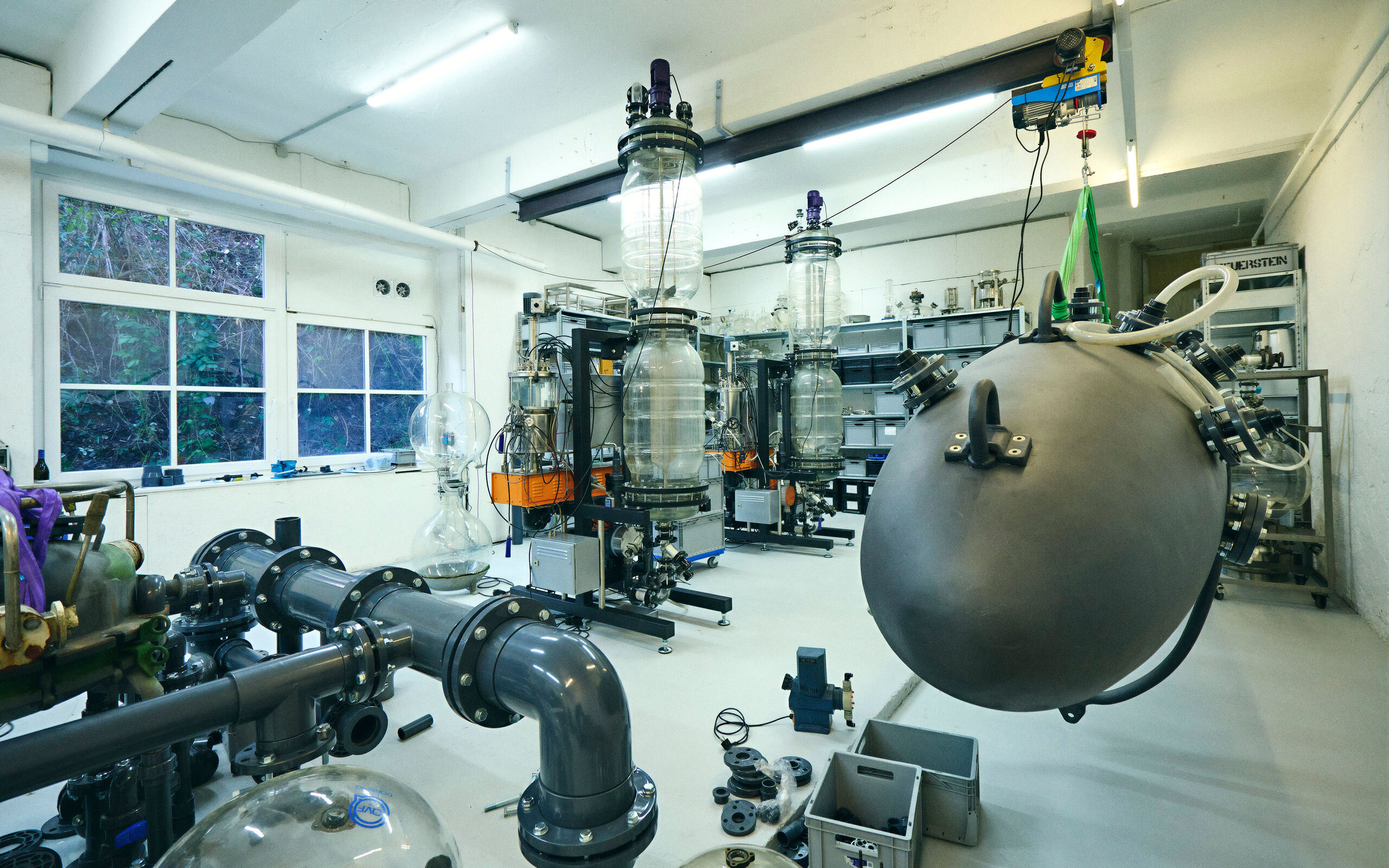
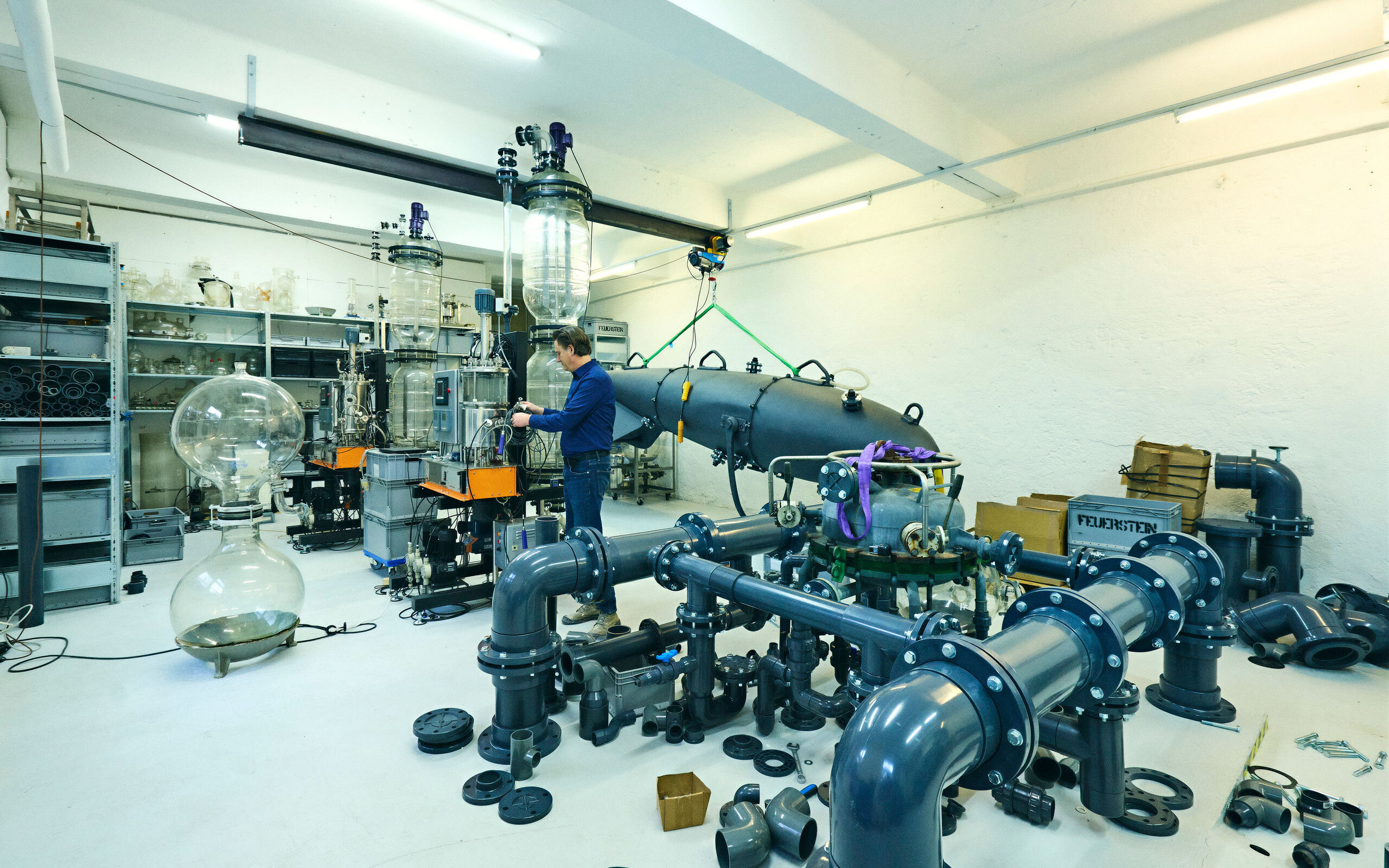
What is meant by the idea of networks in art?
Networks create references to reality and condense artistic work. They break with traditional views of the self and the world, and promote a processual work concept. This makes possible a new poetry of art as poiesis of the real. For example, the numerical statistics of the bullish or bearish, up and down fluctuations of the stock market were transposed into musical notation in Hausmusik in 1993, and new reports from the American Psychological Association (APA) were interpreted by a neural network in the form of an endless prose text, Proustmaschine, 1994.
What plays into the idea of a network?
Generally speaking, for me it is the human condition. Networks create world references and structure relationships between people, without which language, trade, science, or art would be inconceivable in today’s forms. Networks are the expression of a longing to communicate with people and environments, to understand oneself and the many others. For me, a work of art is a node in a network or, in the sense of Clifford Geertz, a dense description of the world. Networks are present in a latent capacity, so we are often not specifically aware of them. Art makes networks manifest, makes them speak for themselves, making them the material of artistic production. Networks cannot be reduced to technical aspects of electronic communication and social networks; they permeate the entire biosphere. That is why I am fascinated by metabolic cycles, molecular communication and material processes in nature, in our bodies as well as in biochemistry and biotechnology. This opens up new possibilities for art not only to depict and represent reality, but also to make it productive. This results in new aesthetics and poetics.
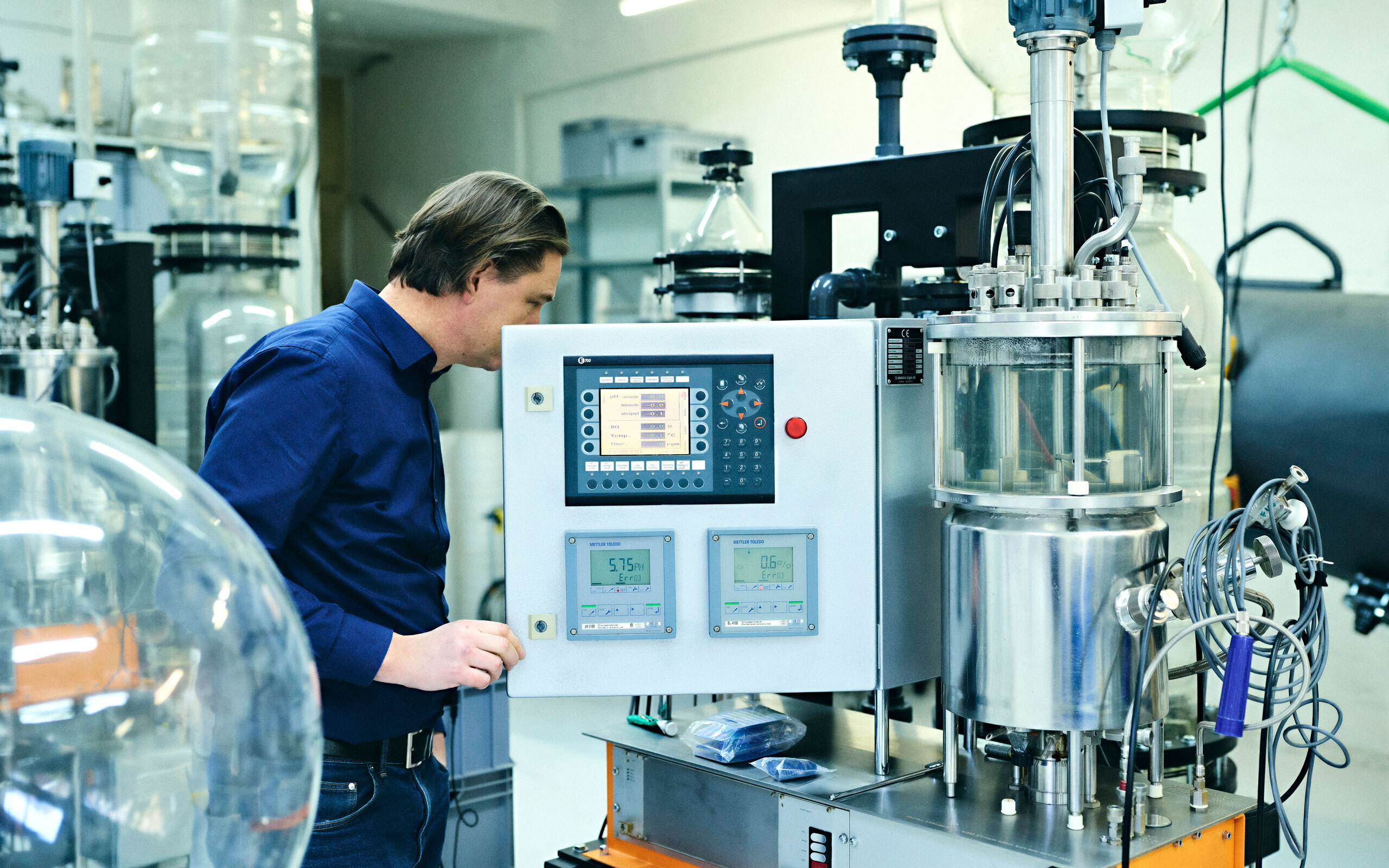
What are the most important questions that concern you in your art production today?
They are questions about the transformational and productive forces of our time. What conditions me and my everyday life and how does it change my life? The question is banal, but the answers are endless and update the question incessantly. How do digitalization and biotechnologies change the relations of life and power, the production and distribution of goods and resources under capitalism, our relationship to the biosphere, and ultimately our self-understanding as individuals? Are concepts such as individual, subject, and author still tenable in today’s world? Doesn’t the insight that we are not delimited entities but, from a biological point of view, holobionts [metaorganism, composed of a complex network of different living beings] also imply a change in our concept of art and culture? As an artist, I cannot retreat to the concept of genius and regurgitate half-baked ideas onto the canvas. I want to listen to the quiet, ephemeral changes and processes and make them speak in the works.
Could you explain your preoccupation with the question of process in the creation of art?
For me, works of art are not the result of an expression, but rather a process. I see the artistic object in my work as a kind of subject or actor with whom I collaborate. The work is bringing together processes and makes them productive by entering into a metabolic relationship with the world, not only symbolically but also in real terms, and performing this metabolism. This is true of digital, algorithmic art as well as for biotechnical art. A simple example: in the early 1990s, I was not concerned with the creation of images and graphics by means of computers, but rather with algorithms and networks that generate works out of their own logic that do not remain suspended in a fixed state. Likewise, this thinking and artistic action is close to a biological art that operates with processes from nature and science.
So the artist creates an artist and the artist creates the work?
The work of art is the better artist. I want to create works that understand the world better than I do. Works of art have always been a kind of artificial intelligence, and since there are algorithmic and biotechnological processes in art, this is also present on an aesthetic level. As an artist, I am a worker and a laboratory technician who cares about the work and creates the appropriate conditions and circumstances. Did Fleming invent penicillin? He let the dirt of the world into the petri dish and let the work we associate with it grow.
How do questions of authorship connect with processes here?
Processes are artistic collaborators. Giving them a voice and negotiating them performatively in the work opens up new possibilities beyond legal discourses on authorship and copyright. I should not consider myself to be more important than a bacterium that is involved in the creation of a work.
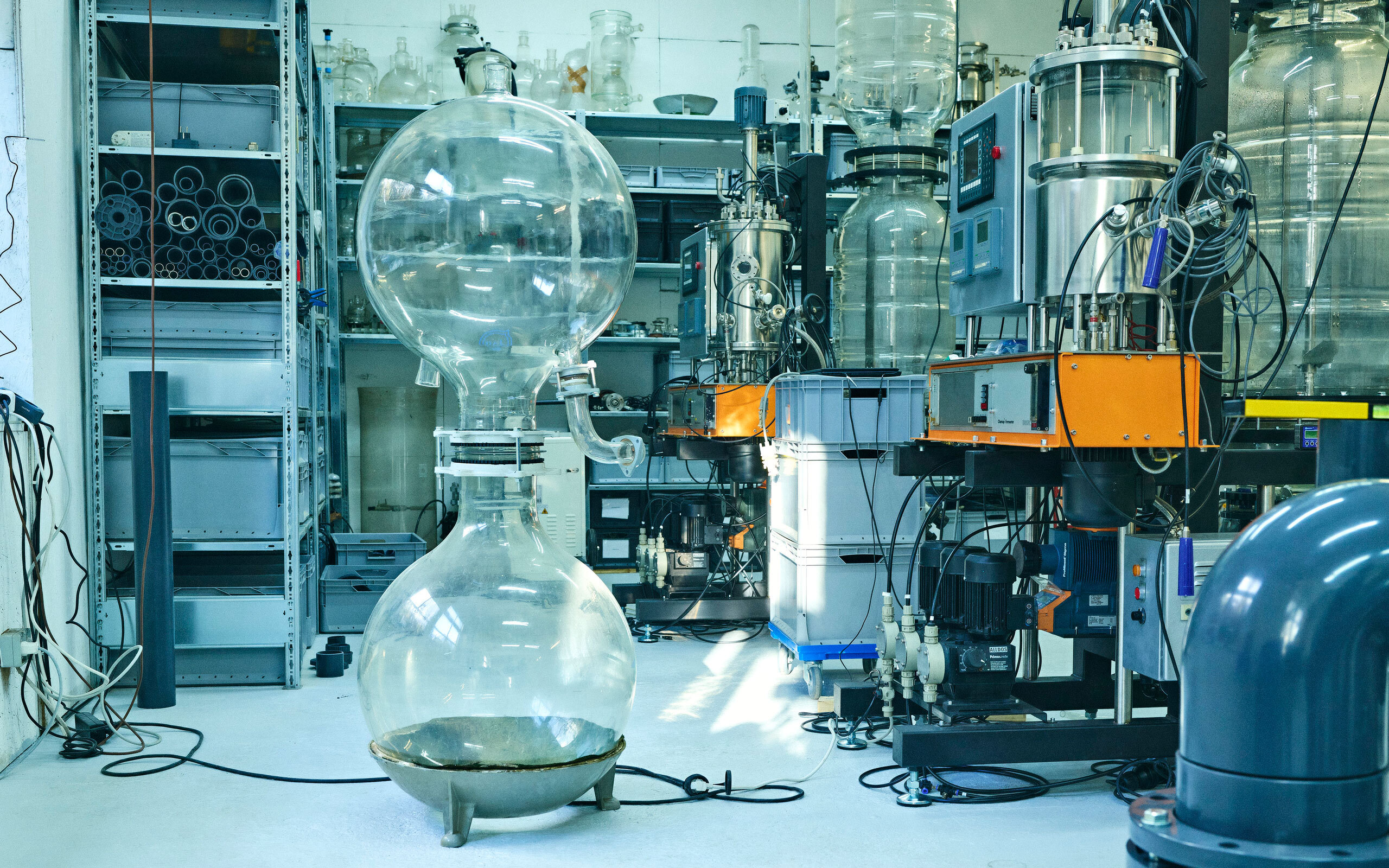
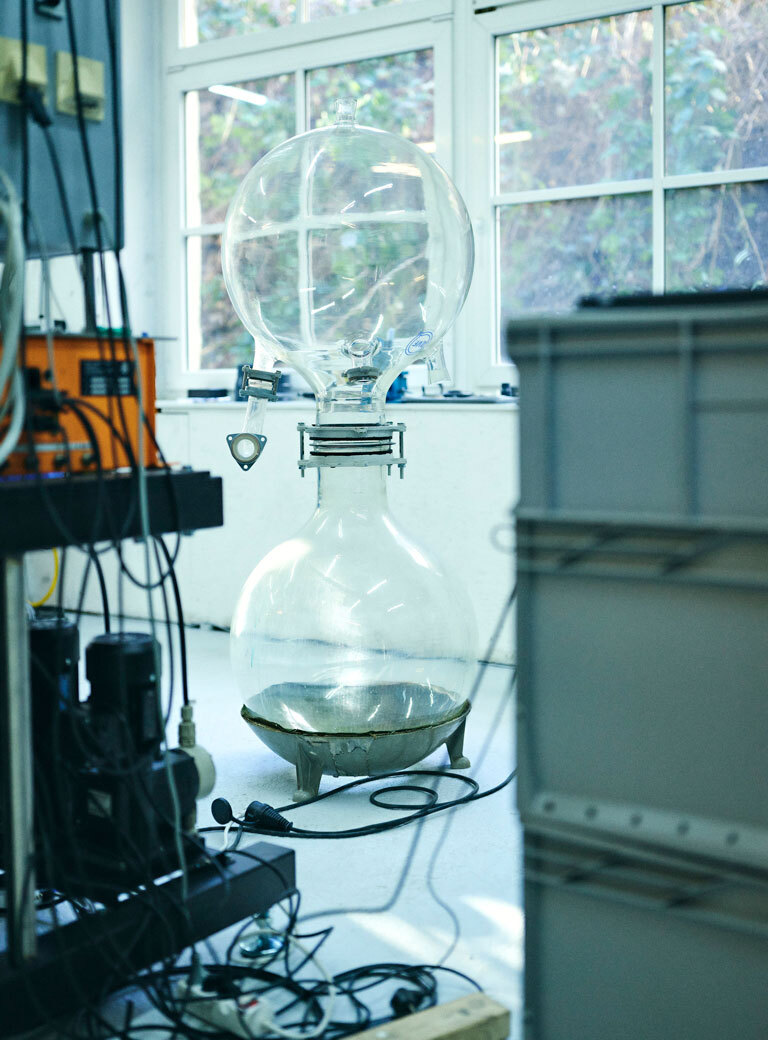
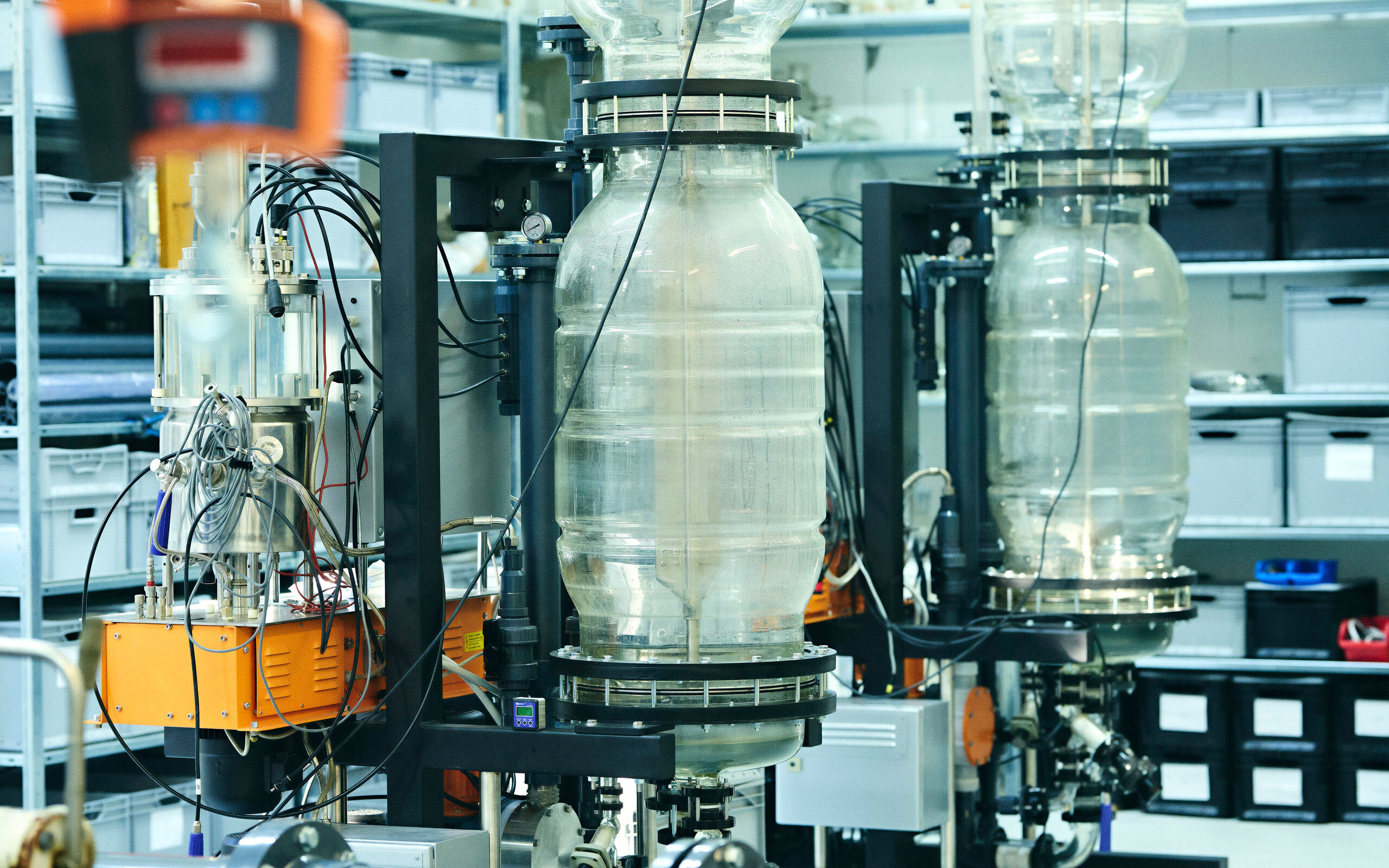
This approach is exemplified in your work Prometheus Delivered from 2017.
In this work a marble sculpture, a replica of a representation of Prometheus by Nicolas Sébastien Adam, is in the process of decomposition by microbial organisms. Stone-eating, so-called chemolithoautotrophic bacteria transform the limestone into gypsum via metabolic processes. I give authorship to bacteria, which act as a sculptor’s chisel by changing the shape of the sculpture and slowly dissolve it. From the accruing plaster, a new sculpture grows without my intervention, as with the work Ovidmaschine. As an artist, I create framework conditions, the idea and concept are the beginning, but the final result produces the work itself.
Why did you choose the figure of Prometheus for this work?
Prometheus is considered the cultural hero of our civilization. He is the first sculptor who creates human beings. He brings them fire and with it technology, progress and culture. Zeus was not pleased about this and punished Prometheus by having him chained to the Kazbek in the central Caucasus Mountains. He also sent the eagle Aithon, which tore pieces out of Prometheus' liver every day. For the Greeks, liver and life were synonymous. It represented the future and served as a medium of prophecy as in the examination of the liver of a sacrificial animal. In Prometheus Delivered, human liver cells are grown in a bioreactor, colonizing a matrix and growing into a sculpture. Since liver cells are responsible for detoxification in our bodies, they can also feed on nutrients from the cells of bacteria. Not only metaphorically, but also metabolically, in Prometheus Delivered, stone becomes organic flesh. A liver sculpture grows as a hepatoscopy [liver reading] in the age of biotechnology.
Is it the process itself that is to be considered a work of art, or is it the questions that are being addressed in the process?
The indistinguishability between these questions is what makes the works interesting to me. I take a nondualistic and holobiontic approach here. Different stories in various languages intertwine, making the work a node in the network of meanings and processes. In the example of Prometheus Delivered, bacteria and somatic cells act as sculptural actors, biochemically relating a molecular story of evolution and becoming human. The associated metaphors and mythologies, while linguistically quite different, consider the same story from a human perspective. In this respect, meanings and processes converge in the question of form, which is actualized today as transformation.
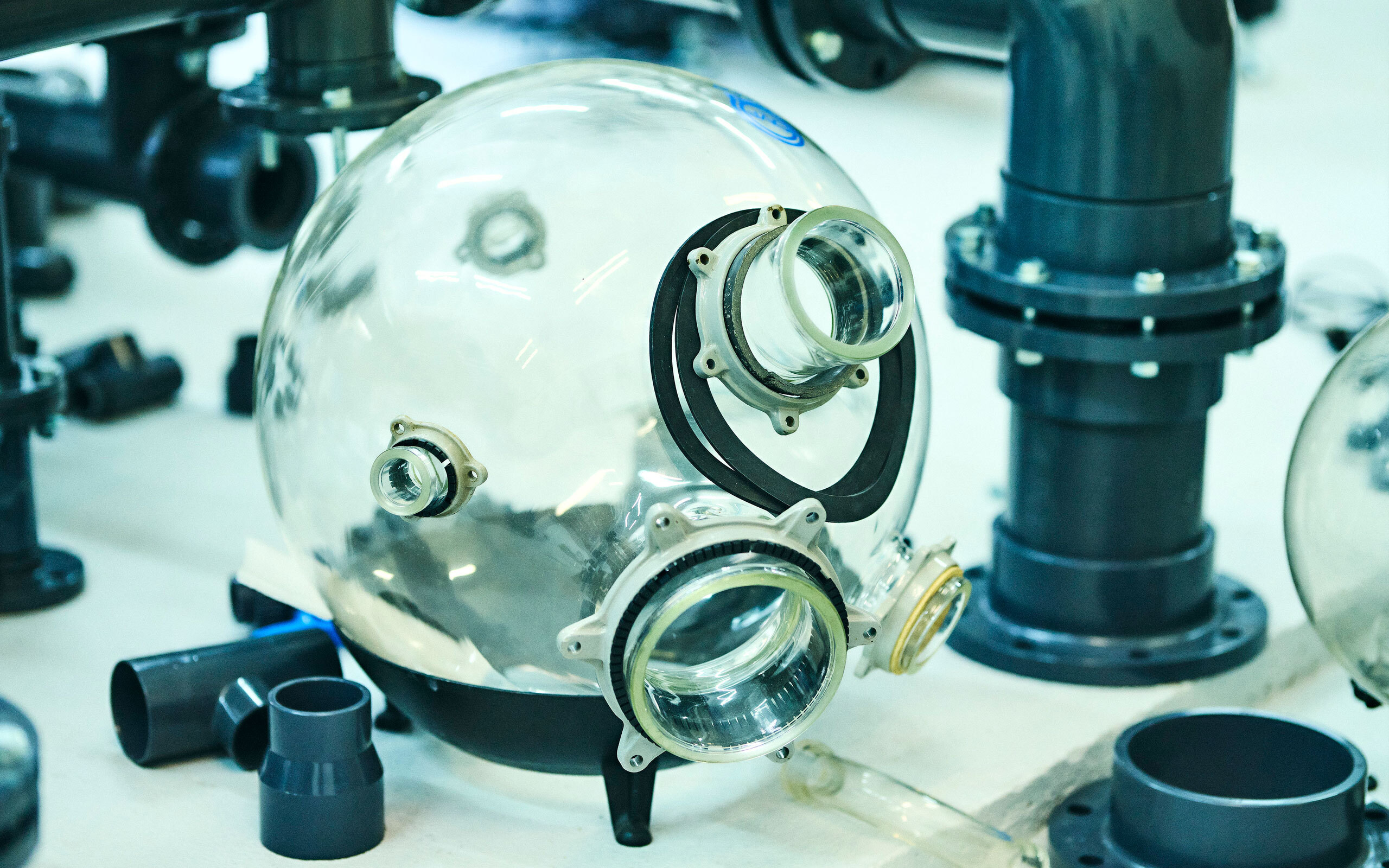
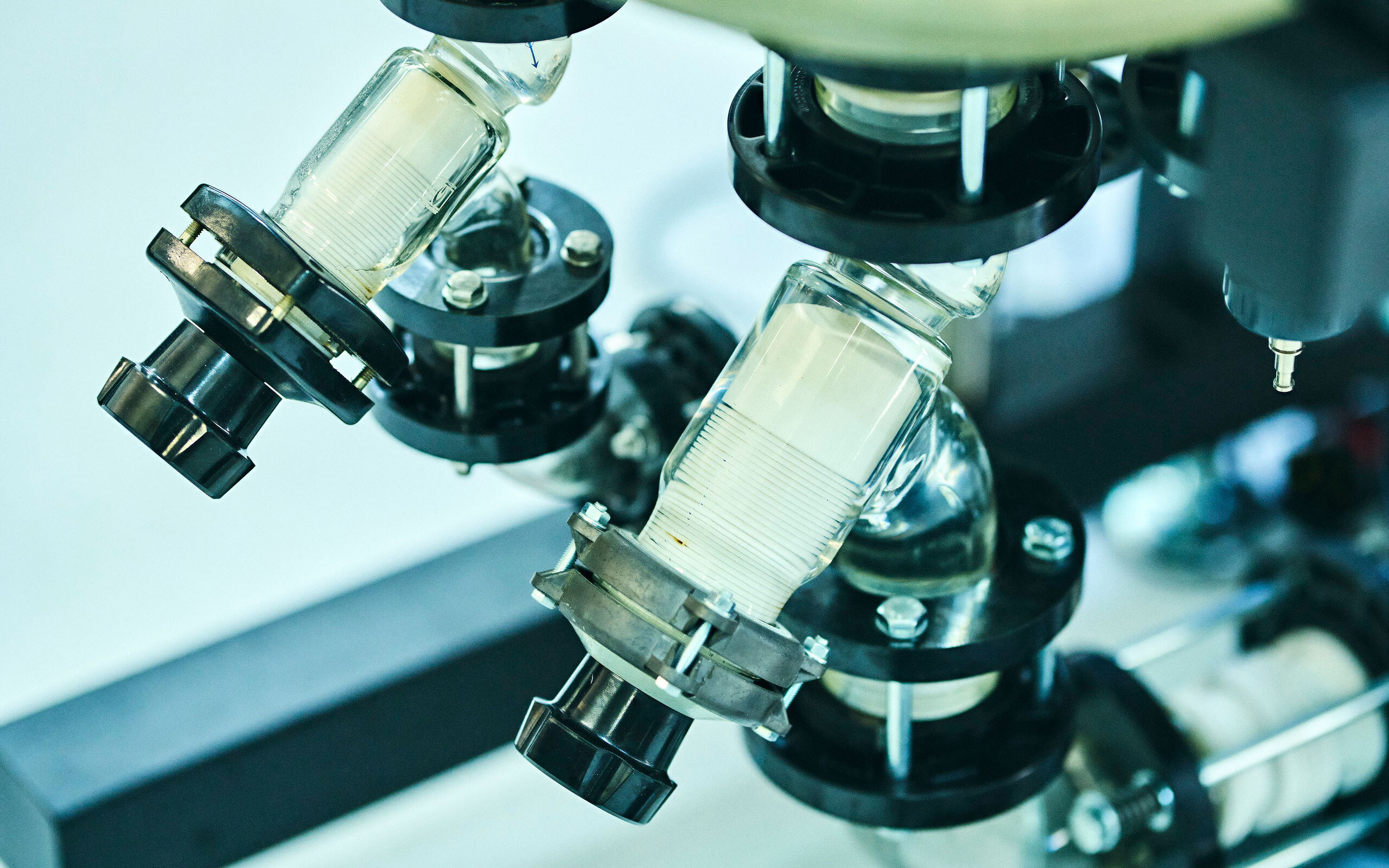
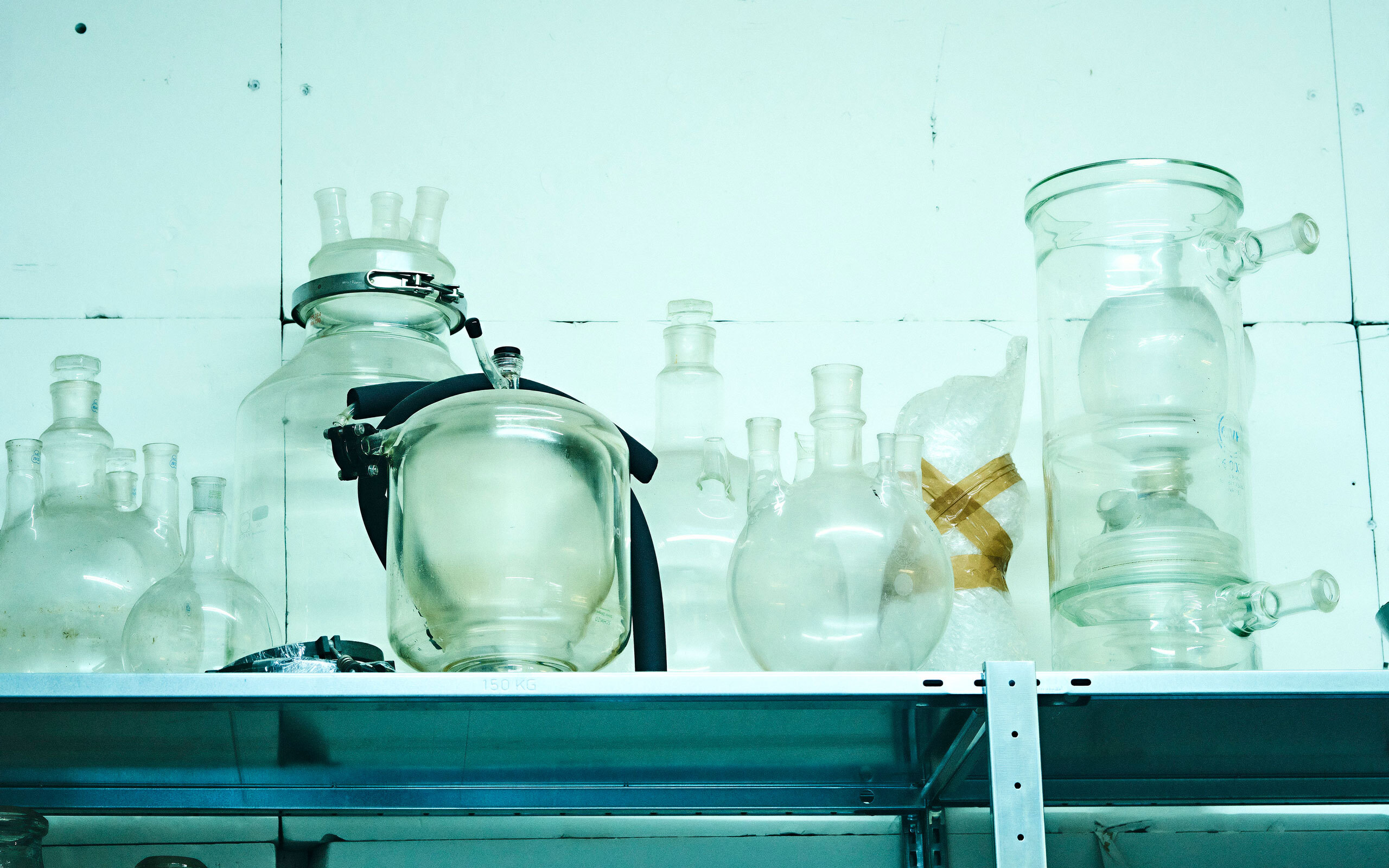
What results mentally for you from working with biological processes?
For me, a work of art is more than a service to fill white walls and empty spaces. Why shouldn’t a work of art be something comparable to a plant, a cloud or an ocean?
What other levels of meaning – possibly also ethical ones – could be gleaned from Prometheus Delivered in this regard?
When you work with living organisms as an artist, you cross the line between aesthetics and ethics. For Prometheus Delivered, I made a graphic novel in which becoming flesh from stone is simultaneously thought of as utopia and dystopia. In the tradition of speculative fiction, it tells of a society in which humans decide not to feed on animals, plants, or other organisms. The right to the availability of life ends in one’s own body. Therefore, comparable to the liver sculpture in Prometheus Delivered, all food, but also materials and energy resources are cultivated in vitro via one’s own body cells. Muscle cells provide meat, skin cells leather, bones building material and fat cells fuel. The former taboo of cannibalism is transformed here into an ethical imperative. The pre-modern and amoral is sublimated by technology, which becomes culinary onanism.
Many disciplines are necessary for your sculptures. Could you clarify your working method?
I am very grateful to work with scientists who bring their research and experience to the projects. Many have become friends, because often artistic and scientific questions, as different as the disciplines are, share a common interest. This inspires me. Currently, I am working with environmental engineers, microbiologists, and a small team of programmers and technicians on a new project that is incredibly diverse and fun. Developing process methods and control technology that work beyond the laboratory under exhibition conditions sometimes takes a few years. The decisive factor for me is that the technology used has charm and does not serve a pragmatic purpose alone.
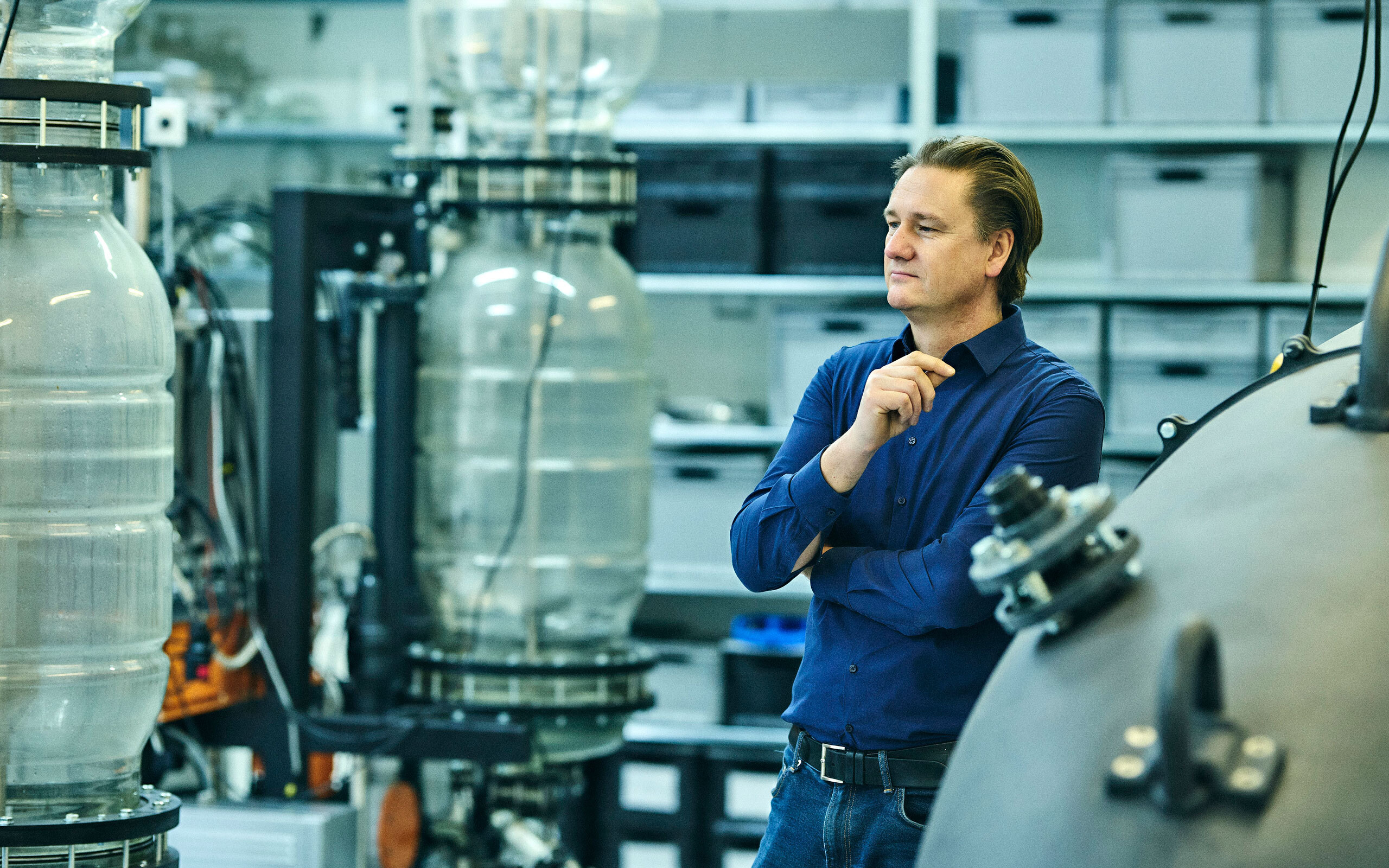
You just mentioned that your machines should have a certain “charm”. What aesthetic aspects are important to you in your performative installations? Because some viewers will certainly approach your works on the visual experience level first, before they deal with the processual level and other levels of meaning.
For me, machines and apparatuses have a sculptural character and are an aesthetic component of the installations. The separation between noble art and disdainful technology is alien to me. In modernism, the machine was celebrated aesthetically, but it primarily served symbolic representation. I’m interested in the machine to set processes in motion, and in this respect it is also an aesthetically integral part of the work.
Your machines look incredibly complex and very mysterious, almost as if they had sprung from the laboratory of a mad professor. Does this complexity play an essential role in the experience of your art?
A work of art is as complex as any other object in the world. But with some objects the complexity is more evident than with others. A star in the night sky is a simple point, but to an astrophysicist it is an incredible spectacle of elements. Romantically speaking, I want to create works of art that fall to earth like shooting stars and, as meteors, tell of another reality.
Art has many forms of representation. Where exactly do you see yourself as an artist here?
Simplified, you can divide art today into two aspects. On the one hand, there is art that represents and works with metaphors and symbols as well as with psychological spatial and color effects. This has a long tradition in art history and in the art market and anthropocentrically places the human being in the center. On the other hand, there is an art that turns to the real and makes processes from nature, science, information technology, economics or politics the material of the work. I am interested in both, but the renewal and topicality of art lies in the second aspect, as a new aesthetic is presented via processes in our data and biosphere. It creates new forms and possibilities of life.
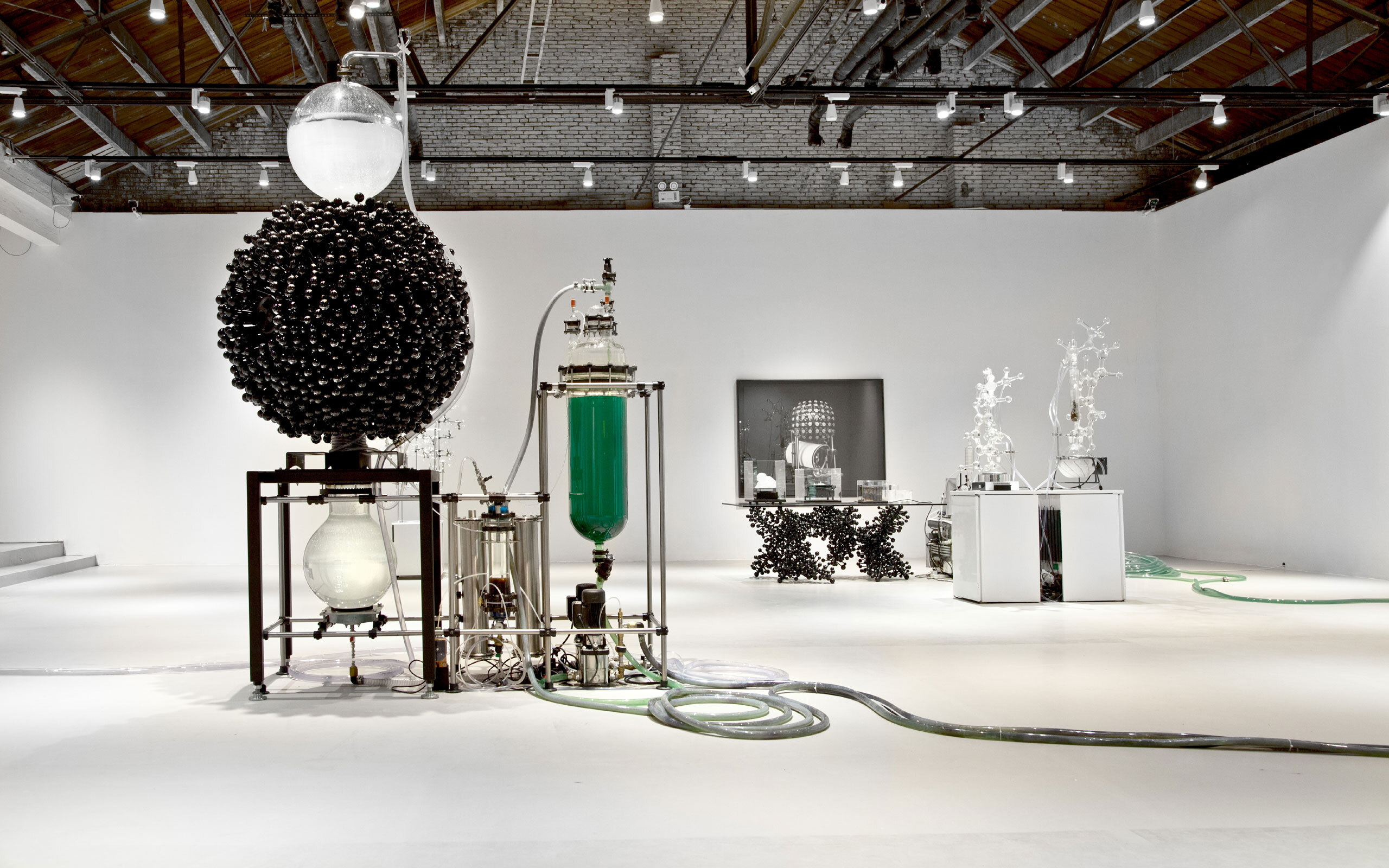
PSYCHOPROSA, 2015, Exhibition view: PSYCHOPROSA, Chronus Art Center, Shanghai 2015
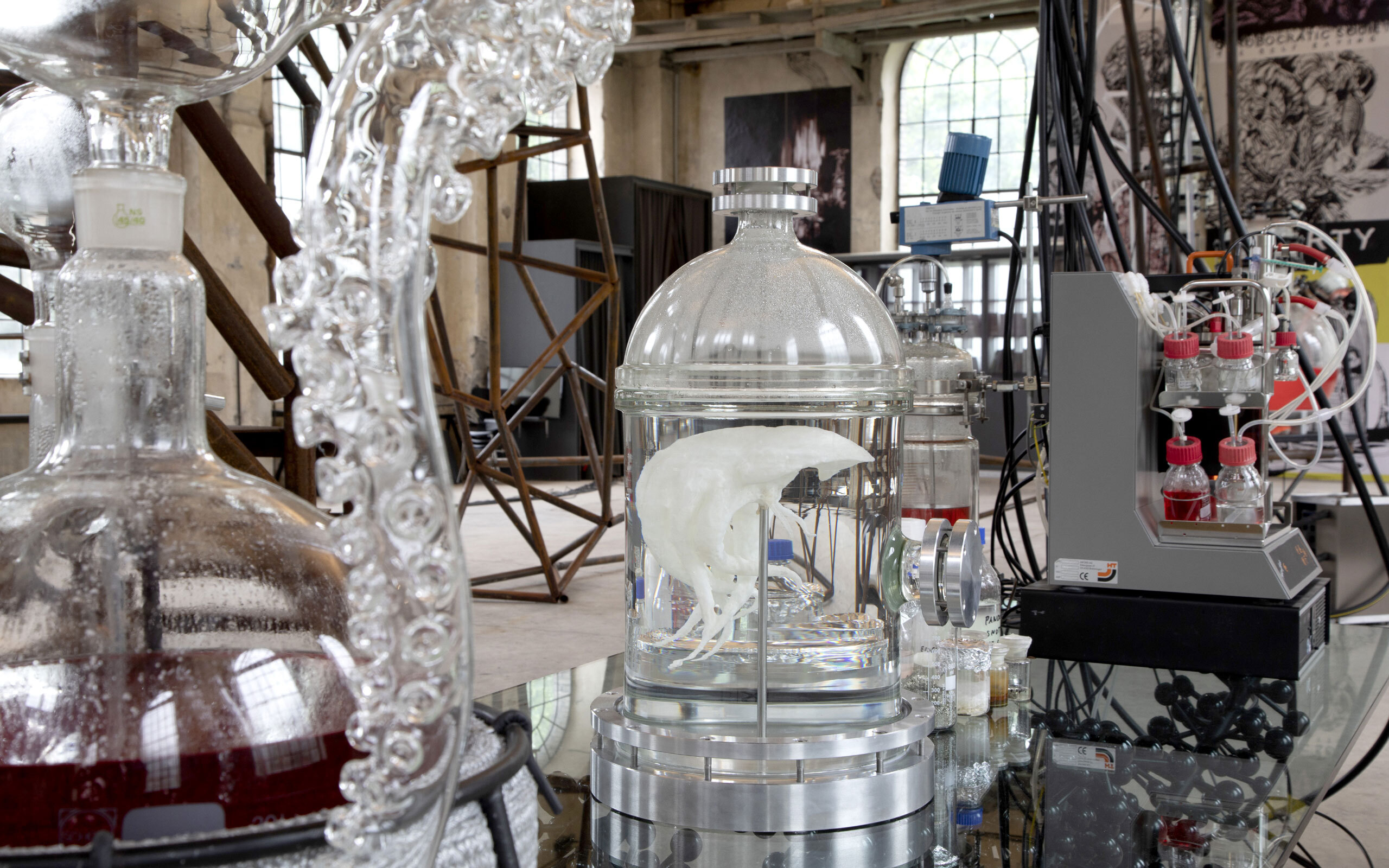
OCTOPLASM, 2017, Glass, liver cells (hepatocytes), plastic, formalin, aluminum, 70 x 43 x 43 cm, Exhibition view: CLUBCANNIBAL, Kunstraum Dornbirn, Dornbirn 2018
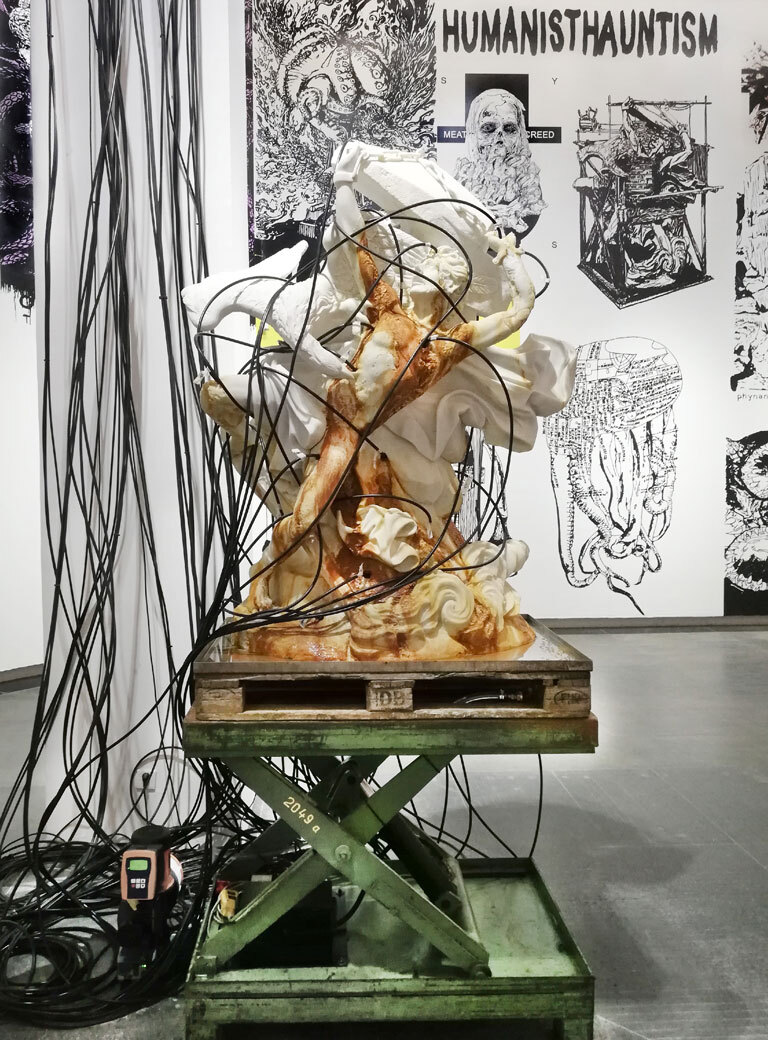
PROMETHEUS DELIVERED, 2017, marble, tubes, europallet, scissor lift table, 280 x 145 x 85 cm, Exhibition view: 6th Guangzhou Triennale, Guangdong Museum of Art, Guangzhou 2018
Interview: Alexandra-Maria Toth
Photos: Günter Kresser


